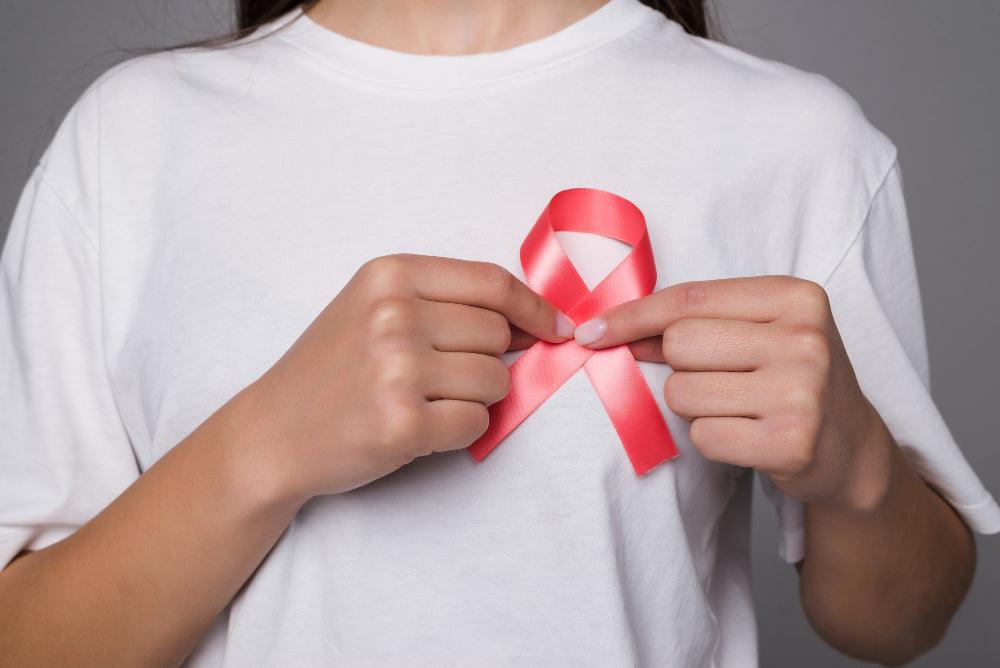
Related products
What’s covered?
The Different Types of Cancer
Breast Cancer
Lung Cancer
Prostate Cancer
Colon Cancer
Colon cancer, also known as colorectal cancer, is a type of cancer that affects the colon and rectum. It is the third most common type of cancer in both men and women in the United Kingdom. Risk factors for colon cancer include increasing age, a family history of the disease, and a diet high in processed and red meats.
Symptoms of colon cancer may include a change in bowel habits, blood in the stool, abdominal pain, and weight loss. Treatment options for colon cancer may include surgery, chemotherapy, and radiation therapy.
Leukemia
Leukaemia is a type of cancer that affects the blood and bone marrow. It is a cancer of the blood-forming tissues, and it results in the production of abnormal white blood cells. There are several types of leukaemia, including acute lymphoblastic leukaemia (ALL), acute myeloid leukaemia (AML), chronic lymphocytic leukemia (CLL), and chronic myeloid leukaemia (CML).
Risk factors for leukemia include exposure to certain chemicals and radiation, a family history of the disease, and certain inherited gene mutations. Symptoms of leukaemia may include fatigue, weakness, easy bruising or bleeding, and frequent infections. Treatment options for leukaemia may include chemotherapy, radiation therapy, and bone marrow transplantation.
Brain Cancer
Brain cancer is a type of cancer that affects the cells in the brain. There are several different types of brain cancer, including gliomas, meningiomas, and astrocytomas. Risk factors for brain cancer include exposure to certain chemicals and radiation, a family history of the disease, and certain inherited gene mutations.
Symptoms of brain cancer may include headache, seizures, weakness or numbness in the limbs, and changes in speech, vision, or hearing. Treatment options for brain cancer may include surgery, chemotherapy, and radiation therapy.
Pancreatic Cancer
Pancreatic cancer is a type of cancer that affects the pancreas, a gland located behind the stomach. It is a particularly aggressive and deadly form of cancer, as it often goes undiagnosed until it has reached advanced stages. Risk factors for pancreatic cancer include increasing age, a family history of the disease, and a diet high in processed and red meats.
Symptoms of pancreatic cancer may include abdominal pain, weight loss, jaundice (yellowing of the skin and whites of the eyes), and nausea and vomiting. Treatment options for pancreatic cancer may include surgery, chemotherapy, and radiation therapy.
Ovarian Cancer
Ovarian cancer is a type of cancer that affects the ovaries, the female reproductive organs located in the pelvis. It is often referred to as the "silent killer," as it often goes undiagnosed until it has reached advanced stages. Risk factors for ovarian cancer include increasing age, a family history of the disease, and certain inherited gene mutations, such as the BRCA1 and BRCA2 genes.
Symptoms of ovarian cancer may include abdominal pain or bloating, feeling full quickly when eating, and frequent urination. Treatment options for ovarian cancer may include surgery, chemotherapy, and radiation therapy.
Other Types of Cancer
There are many other types of cancer that can affect various parts of the body, including the skin, liver, thyroid, bladder, and kidneys. Each type of cancer has its own unique set of causes, symptoms, and treatment options.
It is important to note that not all cases of cancer can be prevented. However, understanding the various types of cancer and their risk factors can help individuals take steps to reduce their risk of developing this disease. This may include quitting smoking, practicing safe sun exposure, eating a healthy diet, and staying physically active.
Common Symptoms
There are some common symptoms that can occur with many different types of cancer. These include:
-
Lumps or masses: Cancerous tumors can often be felt as lumps or masses in the body. These lumps may be painless at first, but they may become painful as they grow larger or as they press against nearby organs or tissues.
-
Unexpected weight loss: Cancer can cause unexpected weight loss, as the body uses up calories and nutrients to fuel the growth of cancer cells.
-
Fatigue: Cancer can cause fatigue, as the body expends a lot of energy trying to fight the disease.
-
Fever: A fever may be a sign of cancer, as the body's immune system tries to fight off the disease.
-
Pain: Cancer can cause pain in various parts of the body, depending on the location of the cancer.
-
Changes in skin: Cancer can cause changes in the skin, such as lumps, bumps, or changes in moles or freckles.
Symptoms by Type of Cancer
In addition to the common symptoms of cancer, there are also specific symptoms that may occur with certain types of cancer. Some examples include:
Breast Cancer
Symptoms of breast cancer may include a lump or mass in the breast, change in breast size or shape, breast pain, and nipple discharge.
Lung Cancer
Symptoms of lung cancer may include a cough that does not go away, chest pain, coughing up blood, and shortness of breath.
Prostate Cancer
Symptoms of prostate cancer may include difficulty urinating, weak flow of urine, and frequent urination, especially at night.
Colon Cancer
Symptoms of colon cancer may include a change in bowel habits, blood in the stool, abdominal pain, and weight loss.
Leukemia
Symptoms of leukemia may include fatigue, weakness, easy bruising or bleeding, and frequent infections.
Brain Cancer
Symptoms of brain cancer may include headache, seizures, weakness or numbness in the limbs, and changes in speech, vision, or hearing.
Pancreatic Cancer
Symptoms of pancreatic cancer may include abdominal pain, weight loss, jaundice (yellowing of the skin and whites of the eyes), and nausea and vomiting.
Ovarian Cancer
Symptoms of ovarian cancer may include abdominal pain or bloating, feeling full quickly when eating, and frequent urination.
It is important to note that not all cases of cancer will present with symptoms, especially in the early stages of the disease. This is why it is important to undergo regular screenings, such as mammograms and colonoscopies, to detect cancer early and increase the chances of successful treatment. If you are experiencing any unusual symptoms or have concerns about your risk of cancer, it is important to speak with a healthcare professional.
Treatments and management of cancer
This section will cover the treatment options and management for cancer.
Surgery
Surgery is a common treatment for cancer that involves the removal of cancerous tumors or tissues. The goal of surgery is to remove as much of the cancer as possible while minimizing the impact on healthy tissues. There are several different types of surgery that may be used to treat cancer, including:
-
Lumpectomy: This type of surgery involves the removal of the cancerous tumor and a small margin of surrounding healthy tissue. It is often used to treat breast cancer.
-
Mastectomy: This type of surgery involves the removal of the entire breast, including the nipple, areola, and some of the surrounding tissue. It is often used to treat breast cancer.
-
Hysterectomy: This type of surgery involves the removal of the uterus. It may be used to treat cancer of the uterus or ovaries.
-
Prostatectomy: This type of surgery involves the removal of the prostate gland. It is often used to treat prostate cancer.
-
Colectomy: This type of surgery involves the removal of part or all of the colon. It is often used to treat colon cancer.
-
Lobectomy: This type of surgery involves the removal of a lobe of the lung. It is often used to treat lung cancer.
-
Brain surgery: This type of surgery involves the removal of cancerous tumors or tissues in the brain. It is often used to treat brain cancer.
Chemotherapy
Chemotherapy is a treatment for cancer that involves the use of drugs to kill cancer cells or stop their growth. Chemotherapy drugs work by targeting rapidly dividing cells, which includes cancer cells but also affects healthy cells that divide quickly, such as those in the hair, gut, and bone marrow.
Chemotherapy is often given in cycles, with periods of treatment followed by periods of rest to allow the body to recover. The side effects of chemotherapy can include hair loss, nausea, vomiting, mouth sores, and an increased risk of infection.
Radiation Therapy
Radiation therapy is a treatment for cancer that uses high-energy beams, such as x-rays or protons, to kill cancer cells or stop their growth. Radiation therapy can be delivered externally, using a machine to deliver the radiation to the cancerous area, or internally, using a device that is placed inside the body near the cancerous tissue.
Radiation therapy can cause side effects, such as skin irritation, fatigue, and nausea. These side effects are usually temporary and go away after treatment is completed.
Targeted Therapy
Targeted therapy is a type of cancer treatment that targets specific molecules or pathways involved in cancer cell growth and survival. These therapies are often used in combination with chemotherapy or radiation therapy to enhance their effectiveness. Examples of targeted therapies include monoclonal antibodies, which target specific proteins on cancer cells, and small molecule inhibitors, which target specific enzymes or signaling pathways.
Hormone Therapy
Hormone therapy is a treatment for cancer that involves the use of drugs or surgery to block the production or action of hormones that can promote cancer cell growth. This type of therapy is often used to treat hormone-sensitive cancers, such as breast and prostate cancer.
Immunotherapy
Immunotherapy is a type of cancer treatment that uses the body's immune system to fight cancer. It works by helping the immune system recognize and attack cancer cells. There are several different types of immunotherapy, including monoclonal antibodies, which target specific proteins on cancer cells, and T-cell therapies, which involve the engineering of immune cells to recognize and attack cancer cells.
Immunotherapy can cause side effects, such as fatigue, fever, and skin rash. These side effects are usually temporary and go away after treatment is completed.
Stem Cell Transplant
A stem cell transplant is a treatment for cancer that involves the replacement of damaged or destroyed bone marrow with healthy stem cells. Stem cells are immature cells that can develop into different types of blood cells, including red blood cells, white blood cells, and platelets.
There are two main types of stem cell transplants: autologous transplants, which use the patient's own stem cells, and allogeneic transplants, which use stem cells from a donor. Stem cell transplants can be used to treat certain types of cancer, such as leukemia, lymphoma, and multiple myeloma.
Clinical Trials
Clinical trials are research studies that investigate new treatments for cancer. They provide an opportunity for patients to access new, innovative treatments that are not yet widely available. Clinical trials are an important part of the process of developing new cancer treatments, as they help researchers determine the safety and effectiveness of these treatments.
Palliative Care
Palliative care is a type of medical care that focuses on relieving the symptoms and stress of cancer. It is often provided in addition to cancer treatment and can help improve the quality of life for patients and their families. Palliative care can include pain management, symptom control, and emotional and spiritual support.
Choosing a Treatment
The choice of cancer treatment will depend on several factors, including the type and stage of the cancer, the patient's overall health, and the patient's preferences. It is important for patients to discuss their treatment options with their healthcare team and to consider their personal values and goals when making treatment decisions.
It is also important for patients to be aware of the potential risks and side effects of each treatment and to consider the impact on their daily life. It is also important to be aware of clinical trials and to discuss them with a healthcare professional as they may be an option for certain patients.
Cancer treatment can be a challenging and overwhelming experience, but with the support of a healthcare team and loved ones, it is possible to manage the physical and emotional challenges of treatment and improve the chances of successful recovery.
Cancer Research
Cancer research is the scientific study of cancer, with the goal of understanding the disease and developing new treatments to improve the lives of cancer patients. Cancer research encompasses a wide range of topics, including the identification of genetic and environmental factors that contribute to cancer, the development of new diagnostic tools and treatments, and the investigation of cancer prevention and early detection strategies.
Genetic Factors in Cancer
Cancer is a complex disease that results from the interaction of multiple genetic and environmental factors. Scientists are working to understand the specific genetic changes that occur in cancer cells and how these changes contribute to the development and progression of the disease. This research has led to the identification of several genetic mutations and abnormalities that are associated with different types of cancer.
One important area of cancer research is the study of inherited genetic mutations that increase the risk of cancer. These mutations, which can be passed down from one generation to the next, can increase the risk of developing certain types of cancer, such as breast, ovarian, and colon cancer. Understanding these inherited genetic mutations can help identify individuals at high risk for cancer and provide them with the opportunity to undergo screening and risk reduction measures.
Environmental Factors in Cancer
In addition to genetic factors, cancer can also result from exposure to environmental factors, such as tobacco smoke, radiation, and certain chemicals. Scientists are working to understand how these environmental factors contribute to the development of cancer and how they can be avoided or reduced to reduce the risk of the disease.
Developing New Treatments
One of the main goals of cancer research is the development of new and more effective treatments for the disease. Scientists are investigating a wide range of treatments, including chemotherapy, radiation therapy, targeted therapies, and immunotherapies, with the goal of finding treatments that are more effective and have fewer side effects.
Cancer Prevention and Early Detection
Cancer research is also focused on the development of strategies to prevent cancer or detect it at an early stage, when it is most treatable. This research includes the development of vaccines to prevent certain types of cancer, such as HPV-associated cancers, and the investigation of screening tests to detect cancer early, such as mammograms for breast cancer and colonoscopies for colon cancer.
Clinical Trials
Clinical trials are research studies that investigate new treatments for cancer. They provide an opportunity for patients to access new, innovative treatments that are not yet widely available. Clinical trials are an important part of the process of developing new cancer treatments, as they help researchers determine the safety and effectiveness of these treatments.
Collaborative Research
Cancer research is a collaborative effort that involves the participation of researchers, healthcare professionals, and patients. By working together, researchers can share ideas and knowledge, pool resources, and make more rapid progress in understanding and combating cancer.
Funding Cancer Research
Cancer research relies on funding from a variety of sources, including government agencies, charitable organizations, and private industry. This funding is used to support the work of researchers, purchase equipment and supplies, and conduct clinical trials.
Future Directions in Cancer Research
Cancer research is an ongoing effort that continues to make significant advances in understanding and treating the disease. In the future, researchers hope to develop more personalized treatments for cancer, based on an individual's specific genetic makeup and the specific changes that have occurred in their cancer cells. They also hope to develop more effective strategies for preventing cancer and detecting it at an early stage. With continued research and collaboration, it is hoped that the burden of cancer can be reduced and more lives can be saved.
Diagnosis of Cancer
Cancer diagnosis is the process of identifying the presence of cancer in an individual. The goal of cancer diagnosis is to detect the disease as early as possible, when it is most treatable. There are several different methods that may be used to diagnose cancer, including imaging tests, biopsies, and lab tests.
Imaging Tests
Imaging tests are used to create pictures of the inside of the body to look for cancer. These tests include:
-
X-rays: X-rays use a small amount of radiation to create images of the inside of the body. They can be used to detect cancer in the bones, lungs, and other organs.
-
CT scans: CT scans use X-rays and computers to create detailed images of the inside of the body. They can be used to detect cancer in many different organs.
-
MRI: MRI uses magnets and radio waves to create detailed images of the inside of the body. It can be used to detect cancer in the brain, spinal cord, and other organs.
-
PET scans: PET scans use a small amount of radioactive material to create images of the inside of the body. They can be used to detect cancer in many different organs.
Biopsies
A biopsy is a procedure in which a small sample of tissue is removed from the body and examined under a microscope to look for cancer cells. Biopsies can be performed using several different methods, including:
-
Fine needle aspiration: A fine needle is inserted into the suspicious area and a small sample of cells is removed.
-
Core needle biopsy: A larger needle is inserted into the suspicious area and a larger sample of tissue is removed.
-
Surgical biopsy: A surgical procedure is performed to remove a sample of tissue from the suspicious area.
Lab Tests
Lab tests are used to analyze samples of blood, urine, or other substances to look for cancer. These tests include:
-
Blood tests: Blood tests can be used to look for cancer markers, which are substances produced by cancer cells that can be detected in the blood.
-
Urine tests: Urine tests can be used to look for substances produced by cancer cells that can be detected in the urine.
Staging
Once cancer is diagnosed, the next step is to determine the stage of the cancer. The stage of cancer refers to the size of the cancer and whether it has spread to other parts of the body. Staging is important because it helps determine the most appropriate treatment for the cancer and can provide a prognosis, or outlook, for the patient.
Prognosis
A prognosis is an estimate of the likely course of a disease, including the likelihood of recovery and the expected length of survival. Prognosis is based on several factors, including the stage of the cancer, the type of cancer, and the patient's overall health. It is important to note that prognosis is not a guarantee and that individual experiences with cancer can vary widely.
Follow-Up Care
Once cancer has been diagnosed and treated, it is important for patients to undergo follow-up care to monitor for any recurrence of the disease. This may include regular check-ups, imaging tests, and lab tests. Follow-up care is an important part of cancer treatment, as it can help detect any recurrence of the cancer early, when it is most treatable.
Second Opinions
It is not uncommon for patients to seek a second opinion when faced with a cancer diagnosis. A second opinion can provide additional information and perspectives on treatment options and can help patients make informed decisions about their care. It is important for patients to feel comfortable with their cancer care team and to have confidence in their treatment plan.
Coping with a Cancer Diagnosis
A cancer diagnosis can be a difficult and overwhelming experience. It is important for patients to seek support from their healthcare team, loved ones, and support groups to help cope with the physical and emotional challenges of cancer. It is also important for patients to take care of their physical and emotional well-being, including getting enough rest, eating a healthy diet, and participating in activities that bring joy and relaxation.
Cancer diagnosis is an ongoing process that involves the use of various methods to identify and stage the disease. With early detection and appropriate treatment, it is possible to improve the chances of successful recovery from cancer.
Conclusion
Cancer is a complex and devastating disease that affects millions of people worldwide. It is a leading cause of death globally, and the incidence of cancer is expected to continue to rise in the coming years. Despite this, significant progress has been made in the understanding and treatment of cancer, and there is hope for continued progress in the future.
Research into cancer has led to the identification of genetic and environmental factors that contribute to the development of the disease, as well as the development of new treatments and prevention strategies. These efforts have resulted in significant improvements in the survival rates of many types of cancer and have brought hope to patients and their families.
However, there is still much work to be done in the fight against cancer. Many types of cancer remain difficult to treat, and there is a need for more effective and less toxic treatments. In addition, more research is needed to understand the complex biology of cancer and to identify new targets for treatment.
Collaboration and funding are key to the success of cancer research. By working together and sharing resources, researchers can make more rapid progress in understanding and combating cancer. Funding from government agencies, charitable organizations, and private industry is essential to support the work of researchers and to advance the field.
In conclusion, cancer is a complex and devastating disease that continues to pose a significant challenge to patients and the healthcare community. However, significant progress has been made in the understanding and treatment of cancer, and there is hope for continued progress in the future. Continued research, collaboration, and funding will be critical to the success of the fight against cancer.



































 Rated Excellent by 14,617+ Reviews
Rated Excellent by 14,617+ Reviews